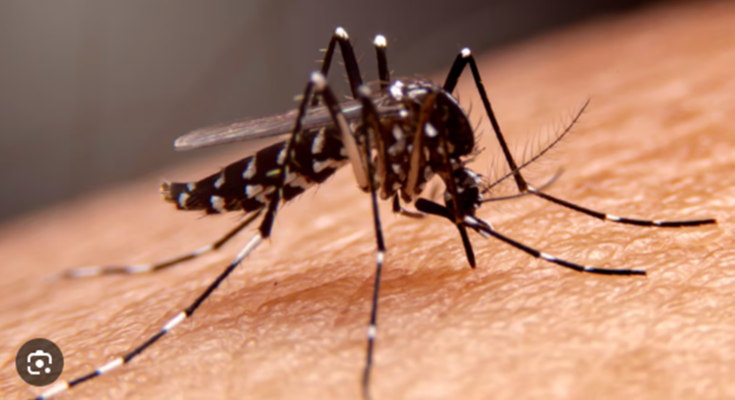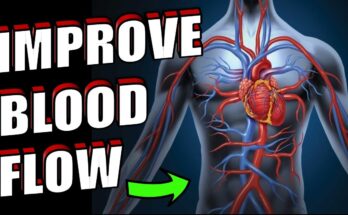Malaria Treatment: Malaria remains a critical global health challenge, especially in tropical and subtropical regions of the world.
This article provides a comprehensive overview of the diagnosis and treatment of malaria, aiming to serve as a valuable resource for healthcare professionals and individuals seeking detailed and actionable information on managing this life-threatening disease.
Understanding Malaria
Malaria is a serious and sometimes fatal disease caused by a parasite that commonly infects a certain type of mosquito which feeds on humans. Four kinds of malaria parasites infect humans: Plasmodium falciparum, P. vivax, P. ovale, and P. malariae. Among these, P. falciparum causes the most severe forms of the disease. The global impact of malaria is enormous, affecting hundreds of millions of people and causing over 400,000 deaths annually, mostly in sub-Saharan Africa. Despite being preventable and treatable, malaria continues to pose a major health challenge in tropical and subtropical regions of the world.
Lifecycle of Malaria Parasites
- Infectious Bite: It starts when an infected mosquito bites a person, transferring the malaria parasites (sporozoites) into their bloodstream.
- Liver Stage: The sporozoites enter the liver cells, where they mature and multiply.
- Blood Stage: Mature parasites leave the liver and infect red blood cells. Here, they continue to multiply, causing the cells to burst open and release more parasites into the bloodstream.
- Transmission Back to Mosquito: When a non-infected mosquito bites an infected person, it ingests the parasites, which continue to develop in the mosquito’s gut.
- Cycle Repeats: The parasites develop into sporozoites in the mosquito’s salivary glands, ready to be transmitted to the next human host.
Risk Factors for Contracting Malaria
- Geographic Location: Living in or visiting tropical and subtropical areas where malaria is prevalent, especially sub-Saharan Africa, South-East Asia, and South America.
- Climate and Time of Year: Regions with warmer temperatures and higher humidity see higher mosquito activity, particularly during and just after the rainy season.
- Precautions Taken: Lack of protective measures such as insecticide-treated mosquito nets, anti-malarial drugs, and insect repellent increases risk.
- Community Immunity: Areas with low immunity among the population can have higher transmission rates, especially where healthcare access is limited.
However, understanding the definition, lifecycle, and risk factors associated with malaria is crucial for its prevention and management, especially in regions most affected by the disease.
Symptoms of Malaria
Recognizing the symptoms early can significantly improve treatment outcomes and reduce the likelihood of severe complications. Here’s an overview of the common symptoms and the importance of early detection:
Common Symptoms of Malaria
- Fever and Chills: These are the most recognizable symptoms of malaria. Fever may be mild initially but can quickly escalate to high fevers with severe chills.
- Headache and Dizziness: Persistent headaches and a feeling of lightheadedness or dizziness are common in malaria patients.
- Sweats and Shivering: Following chills, patients often experience sweating as the body temperature fluctuates.
- Muscle Pain and Fatigue: Generalized body aches and a significant feeling of tiredness and weakness are typical.
- Nausea and Vomiting: Digestive symptoms like nausea and vomiting can also occur, making it difficult to keep food down.
- Diarrhea: Although less common, diarrhea can also be a symptom of malaria.
- Anemia and Jaundice: Due to the destruction of red blood cells, malaria can lead to anemia and jaundice, indicated by yellowing of the skin and eyes.
Importance of Recognizing Early Symptoms
Early recognition and treatment of malaria are crucial for a few reasons:
- Preventing Complications: Early treatment can prevent the disease from progressing to severe forms, such as cerebral malaria, which can cause brain damage and even be fatal.
- Reducing Transmission: Timely diagnosis and treatment help reduce the spread of the disease, as treated individuals are less likely to pass the parasite to mosquitoes that could infect others.
- Improving Outcomes: Early intervention can lead to better health outcomes and a quicker recovery, minimizing the economic and social disruption caused by the disease.
However, understanding these symptoms and seeking prompt medical attention if malaria is suspected are vital steps in effectively managing the disease.
Diagnosing Malaria
Why Timely Diagnosis is Crucial for Malaria Treatment
Malaria, a life-threatening disease transmitted through the bites of infected mosquitoes, requires swift diagnosis and treatment to prevent severe complications and reduce its spread. Early detection of malaria ensures effective management of the disease, helping to mitigate the risk of progression to severe forms that can lead to death, especially in children and pregnant women. Prompt diagnosis not only facilitates the start of appropriate antimalarial medications but also reduces the likelihood of unnecessary treatments and helps in conserving valuable healthcare resources.
List of Diagnostic Methods
- Rapid Diagnostic Tests (RDTs): These tests provide results within 15 to 30 minutes, using a blood sample to detect antigens derived from malaria parasites. RDTs are particularly useful in settings without laboratory facilities.
- Microscopic Examination: This method involves staining and visually examining a blood smear under a microscope to detect the presence of malaria parasites. It’s considered the gold standard for malaria diagnosis due to its accuracy and ability to quantify parasite load.
- Molecular Diagnosis (PCR): Polymerase Chain Reaction (PCR) tests detect the genetic material of malaria parasites. This method is more sensitive than microscopy and can identify low parasite densities and differentiate between types of malaria.
- Serology: Serological tests detect antibodies against malaria but are primarily used for research rather than direct diagnosis because they cannot distinguish between current and past infections.
Challenges in Malaria Diagnosis
Diagnosing malaria presents several challenges that can impede effective disease management:
- Lack of Resources: In many malaria-endemic regions, there’s a shortage of trained personnel and equipment, making it difficult to perform timely and accurate diagnoses.
- Variable Symptoms: Malaria symptoms can be non-specific and similar to those of other febrile illnesses, which can lead to misdiagnosis and delay in appropriate treatment.
- Resistance to Diagnostic Tests: There is emerging resistance to some forms of rapid diagnostic tests, which can result in false negatives and further complicate the diagnosis process.
- Accessibility: Remote and rural areas often have limited access to diagnostic facilities, leading to delayed treatment and increased risk of malaria spreading.
However, efficient malaria diagnosis is essential to controlling the disease, saving lives, and enhancing public health. Overcoming these diagnostic challenges is critical in the global fight against malaria.
Treatment Options for Malaria
When it comes to managing malaria, a precise and effective treatment plan is crucial for patient recovery and preventing complications. Here, we explore the general approach to malaria treatment, as well as specific treatment protocols tailored for different groups of patients.
General Approach to Malaria Treatment
The treatment of malaria primarily involves antimalarial medications that are chosen based on the type of parasite present, the area where the infection was acquired, and its drug-resistance status. The general steps in treating malaria include:
- Prompt Diagnosis: Rapid and accurate diagnosis is essential, typically through blood tests that detect the presence of the parasite.
- Determination of the Malaria Species: Identifying whether the infection is caused by Plasmodium falciparum, P. vivax, P. ovale, P. malariae, or P. knowlesi as treatment regimens vary accordingly.
- Assessment of Disease Severity: Determining whether the malaria is uncomplicated or severe (complicated) influences the choice of treatment.
- Consideration of Patient Factors: Age, pregnancy status, underlying health conditions, and drug allergies are considered to select the appropriate medication.
- Administration of Antimalarial Drugs: The most commonly used antimalarials include artemisinin-based combination therapies (ACTs) for P. falciparum malaria. Other options are chloroquine, quinine, and mefloquine, depending on resistance patterns and species.
Treatment Protocols for Different Groups
Treatment protocols for malaria vary among different demographic and physiological groups:
- Children: Pediatric dosages are adjusted based on weight and age, and the choice of drug is influenced by the severity of the symptoms and local drug resistance patterns.
- Pregnant Women: Malaria in pregnancy requires careful consideration as some antimalarial drugs can be harmful during pregnancy. Drugs like chloroquine or artemether-lumefantrine are preferred depending on the resistance and trimester.
- Travelers: Prophylactic (preventive) treatments may be recommended for travelers to endemic regions, typically drugs like atovaquone-proguanil, doxycycline, or mefloquine, depending on the destination and length of stay.
- Individuals with Drug Resistance or Allergies: For those in regions with known drug resistance or those with specific drug allergies, alternative medications that are effective against resistant strains or safe for allergic individuals are used.
By adhering to these tailored treatment protocols and promptly addressing the specific needs of each group, healthcare providers can effectively manage malaria, reducing its impact and improving outcomes for affected individuals.
Preventative Measures and Malaria Control
Malaria prevention involves several strategies that individuals and communities can adopt to reduce the incidence of this life-threatening disease. Key preventive measures include:
- Insecticide-Treated Mosquito Nets (ITNs): Sleeping under long-lasting insecticidal nets (LLINs) can significantly reduce malaria transmission. These nets are treated with insecticides that kill or repel mosquitoes.
- Indoor Residual Spraying (IRS): This method involves spraying the interior walls of homes with insecticides. It is effective in killing mosquitoes that come into contact with the treated surfaces.
- Antimalarial Medication: Prophylactic antimalarial drugs are recommended for travelers to high-risk areas, and for certain populations during peak transmission seasons.
- Environmental Control: Reducing mosquito breeding sites by draining stagnant water and promoting proper sanitation can help diminish mosquito populations.
- Use of Protective Clothing: Wearing long-sleeved shirts and trousers, especially during evening and night when mosquitoes are most active, provides additional protection.
- Mosquito Repellents: Applying insect repellent on exposed skin and clothing according to the manufacturer’s instructions can deter mosquito bites.
Community and Global Efforts in Reducing Malaria Incidence
Community and global initiatives play a crucial role in combating malaria. These efforts include:
- Education and Awareness Campaigns: Educating communities about malaria transmission, symptoms, and prevention methods is vital. Awareness helps in promoting the use of preventive measures like ITNs and IRS.
- Research and Development: Ongoing research to develop more effective antimalarial drugs and vaccines is critical. The RTS,S/AS01 (Mosquirix™) vaccine, for example, represents a significant advancement in malaria prevention.
- Collaborative Programs: Global health organizations such as the World Health Organization (WHO), the Global Fund, and the Roll Back Malaria (RBM) Partnership coordinate international efforts to reduce malaria. These programs support national malaria control programs, provide funding, and facilitate the distribution of preventive tools.
- Community-Based Interventions: Local health workers often lead initiatives to distribute mosquito nets, conduct spraying programs, and provide community-based health education.
- Monitoring and Surveillance: Effective surveillance systems are essential to monitor malaria cases and control efforts, helping to allocate resources efficiently and respond to outbreaks promptly.
Through combined efforts at individual, community, and global levels, significant progress can be made in the fight against malaria, aiming for a malaria-free world.
Challenges in Malaria Treatment
Malaria treatment faces numerous obstacles, from drug resistance to issues with healthcare access in endemic regions. Addressing these challenges requires a coordinated global effort and continuous research.
Drug Resistance: Challenges and Research
One of the most daunting challenges in the fight against malaria is drug resistance. Malaria parasites have developed resistance to many antimalarial drugs, including chloroquine and sulfadoxine-pyrimethamine, which were once staples in malaria treatment. This resistance compromises the efficacy of these drugs, making the disease harder to treat and control. Ongoing research focuses on developing new drugs that can overcome resistant strains of the malaria parasite. Scientists are also exploring innovative strategies such as combination therapies and drugs with novel action mechanisms to stay ahead of resistance patterns.
Access to Healthcare in Malaria-Endemic Regions
Access to effective healthcare is critical in malaria treatment, yet it remains a significant hurdle in many malaria-endemic areas. These regions often suffer from a lack of medical facilities, insufficient numbers of healthcare professionals, and poor infrastructure, making it difficult for residents to receive timely and adequate malaria treatment. Efforts to improve healthcare accessibility are crucial and include building more health facilities, improving transportation networks to existing facilities, and training local populations in basic malaria prevention and treatment practices.
The Role of International Organizations in Malaria Eradication
International organizations play a pivotal role in the global fight against malaria. Entities like the World Health Organization (WHO), the Global Fund, and the Roll Back Malaria Partnership work to coordinate efforts, fund research, and implement strategies aimed at eradicating malaria. These organizations help to mobilize resources, set international health standards, and provide strategic guidance to affected countries. Their involvement is essential in ensuring sustained efforts towards malaria control and eventual eradication, aiming to achieve a malaria-free world.
Through addressing these challenges, the global health community continues to make strides towards reducing the burden of malaria, improving health outcomes, and saving lives in affected regions.
FAQs about Malaria Treatment
What is the first line of treatment for malaria?
The first line of treatment for malaria typically includes artemisinin-based combination therapies (ACTs). These medications effectively clear the parasite from the bloodstream and reduce transmission of the disease. The specific type of ACT prescribed can vary depending on the region and resistance patterns of the malaria parasite.
How long does malaria treatment take?
Malaria treatment duration can vary depending on the severity of the infection and the type of malaria parasite. Typically, treatment courses last from three to seven days. For more severe cases, especially those involving Plasmodium falciparum, hospitalization may be necessary to administer intravenous medication and provide supportive care.
Are there any side effects of malaria medications?
Like all medications, malaria treatments can have side effects. Common side effects include nausea, vomiting, and dizziness. More serious side effects, such as allergic reactions or heart complications, are rare but require immediate medical attention.
Can malaria be treated at home?
Mild cases of malaria may be treated at home under the guidance of a healthcare provider, especially if hospital resources are stretched. However, it is crucial to follow the prescribed medication regimen strictly and keep in close contact with healthcare professionals during treatment.
What should I do if symptoms persist after treatment?
If symptoms persist after completing malaria treatment, it’s important to consult a healthcare provider immediately. Persistent symptoms may indicate incomplete treatment, resistance to the medication, or a co-infection with another disease.
Is there a vaccine available for malaria?
As of the last update, there is a vaccine for malaria known as RTS,S/AS01 (Mosquirix), which has been approved for use in certain African countries. It is particularly recommended for children under the age of five, who are most vulnerable to the disease. The vaccine is a complementary malaria control tool to be used in addition to the existing preventive measures.
Conclusion
The accurate diagnosis and treatment of malaria are crucial in controlling and eventually eliminating this life-threatening disease. Timely and precise diagnosis is essential to ensure that patients receive the correct treatment promptly, which not only aids in swift recovery but also helps in reducing the spread of the infection. Effective treatment regimes, tailored to the specific type of malaria and its resistance patterns, are vital for the eradication of the parasite and for minimizing the risk of complications and fatalities.
Looking towards the future, the fight against malaria holds promise due to ongoing advancements in research and technology. Innovations such as the development of more effective malaria vaccines, the use of gene editing technologies to control mosquito populations, and the creation of new antimalarial drugs are set to revolutionize malaria control strategies. Additionally, the implementation of improved surveillance systems to monitor and respond to malaria outbreaks more efficiently is also on the horizon. With sustained global commitment and investment in these innovative approaches, we can look forward to a world where malaria is no longer a major public health threat.
References
For those interested in delving deeper into the treatment of malaria and seeking reputable sources for validation of information, the following references are invaluable:
- World Health Organization (WHO) – Malaria Treatment Guidelines: These comprehensive guidelines offer the latest recommendations for treating malaria, including drug dosages and treatment strategies. Read more at the World Health Organization website.
- Centers for Disease Control and Prevention (CDC) – Malaria Diagnosis & Treatment (United States): This resource provides detailed information on the diagnosis and treatment protocols for malaria in the United States, emphasizing the latest therapeutic approaches and CDC recommendations. Explore further on the CDC’s page.
- The Lancet – Recent Advances in Malaria Treatment: This article from one of the world’s leading medical journals discusses recent scientific developments and innovations in malaria treatment. Access the article on The Lancet’s website.
- PubMed Central – Comparative Studies on Malaria Drugs: For those interested in the scientific comparison of malaria drugs, this repository of peer-reviewed biomedical literature from the U.S. National Institutes of Health offers a plethora of articles and studies. Visit PubMed Central for detailed studies.
These sources are crucial for healthcare professionals, researchers, and anyone interested in the specifics of malaria treatment methodologies and the underlying evidence supporting them.



